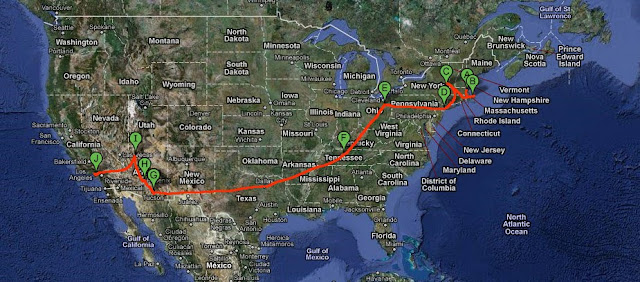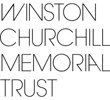If you had told me a year ago that I would be sitting down for lunch with a Tennessee judge in the board room of a Drug Court Residential Program in Nashville, I would have assumed that your journey into rehab and recovery was imminent. But that was how my visit began.
Developing Character During Confinement in Davidson County Drug Court, or DC4, is the brainchild of Judge Seth Norman, a Korean war veteran and Tennessee judge since 1990 who recognised that there was a population of people appearing before him who were in the ‘revolving door’ syndrome and that substance abuse lay behind their offending behaviours.
There are six criminal courts in Davidson County, Nashville, and each court is handling about 2,000 cases a year. Of these, 80% involve some kind of drug and alcohol abuse and 60% of those charged have a chemical dependency problem. With a very high recidivism rate and nowhere for these men and women to get treatment outside of the prison system, Judge, as everyone from professionals to the residents call him, decided to try something different.
Structured and closely monitored drug rehabilitation, administered and directed by the court, was the model they decided to try.
Initially, the drug court was set up to run after the close of daily court sessions, Judge Norman presiding, and was aimed at individuals who were on probation or non-custodial sentences of some kind. The results of the close monitoring, urine testing, and the programme of education and recovery were encouraging and successful, but didn’t help those incarcerated people who needed treatment the most.
And so a residential drug court system was inaugurated on land formerly used by a state mental health facility in buildings that were extremely dilapidated and nearly untenable, or ‘filthy and dismal’ as Judge puts it. He went to the jails to talk to prisoners who were known to want drug treatment and found six volunteers who were willing to work on the premises in exchange for a recovery programme; and with a combination of scrounging, scavenging and a small grant from the state, enough furniture, bedding and food were acquired to open the doors in 1995.
The project was considered successful enough that when Dell Computers wanted to relocate to Nashville they were sold the drug court land, and a new $3,000,000 residential drug court facility was built to house up to 76 male and 40 female non-violent felony offenders. (A felony in the US is a crime that carries a sentence of 366 days and above on conviction.)
DC4 is no ‘fancy’ rehab and its simple block construction and dormitory accommodation to sleep 30 per room gives the place a very institutional feel, but there are no warders with keys, and there is a daily recovery programme run by by the director Janet Hobson and her staff of assessors, seven counsellors, a psychiatrist, a community service coordinator, a teacher and several court related staff and some volunteers. To qualify for treatment each offender has to have a chemical dependency, educational, employment and medical assessment and has to plead guilty to whatever charge has been brought against them, and has got to want to do something about the causes of the offending behaviour.
The initial six to eight weeks is the Assessment and Orientation period when a treatment plan is set up and only trips to the hospital or court are allowed. The next period is called Stabilisation and Rehabilitation and can take up to a year to complete. In this stage, cognitive behavioural therapy and motivational interviewing combined with the 12 Step programme and various educational and therapeutic groups take place; with five AA/NA/CA meetings a week, vocational training and the completion of 200 hours community service seen as part of the programme. The third stage is the Re-entry and Employment phase where education, vocational training and work options develop prior to departure to transitional housing and six months compulsory after-care.
Throughout the whole process random urine testing occurs and Judge Norman sits twice a week in the courtroom set up in DC4 to review progress and deal with infractions. Judge told me that there are men in there at the moment who would have got 10 to 20 years in jail had they not chosen to go the drug court route, and that since they started, the quickest anyone has gone through the system and back into the community full-time has been in 14 months. A resident told me two years was a realistic target for him.
Given national and local sensitivities and perceptions that criminals are getting an easy ride from a member of the State Democratic Executive Committee and a 1968 delegate to the National Democratic Convention, at the expense of the ‘hard-working American tax payers’ (a phrase I hear daily in these electioneering days), Judge Norman wants DC4 to be as close to self-supporting as possible. To this end residents grow most of their own vegetables and a surplus for sale, do all the necessary building and vehicle maintenance on site, and contribute 66% of their wages earned in stage three towards the running costs of the programme.
This residential model is the only one of is kind in the USA and is considered highly successful and the statistics from the website make interesting reading:
‘‘Since the program was established in 1997, 365 offenders have successfully completed the program. The recidivism rate for persons successfully completing the program is approximately 25%. The retention rate since program inception is approximately 65%. On average, participants had more than 8 previous drug charges, and had been previously incarcerated from two to four years. By using this approach since May of 1997, the Davidson County Drug Court program has accomplished the following: diverted approximately 1,057 people from the current criminal justice process, maintained a negative drug test rate of 97%, provided the community with over 50,000 community service hours annually, maintained a 100% employment rate for graduates, and 5 drug-free babies have been born. All of this has been accomplished at a cost of $38.00 per day as opposed to $45.00 to $55.00 per day in prison, representing a savings in excess of 30%.’’
That last statistic was the one that Judge Norman was keen to stress to me, as that is the one that carries the most weight in these troubled financial times to those to whom he is accountable. If he can convince the US population that jail is not only less effective than treatment for a large percentage of the prison population, but more expensive too, then he may be going a long way towards treating a lot of crime as a symptom of an underlying condition known as addiction, not as moral failure. This would be a big, not to say revolutionary, change to current thinking and practice.
I wish I could say that lunch with the Judge in Nashville had finished with mint juleps and cigars on the veranda discussing the works of Tennessee Williams. It didn’t. It had been a working lunch, made and served by recovering female residents learning the catering business; with a busy and enlightened man who has a belief and mission to match his powerful personality. To my eyes his project works well and is a model that could be exported around the world. Let’s hope so.






My son has just been sent to DC4 and I want to thank Judge Norman for this 2nd chance for him. I pray that he follows the rules and can complete this program. He was addicted to pain killers and was a total mess. Thank you Judge Norman and Thank you God for giving him another chance.
ReplyDeletehow do i get in touch with the program?
Deletehow do i get in touch with the program?
Deletehow do i get intouch with them?
ReplyDelete